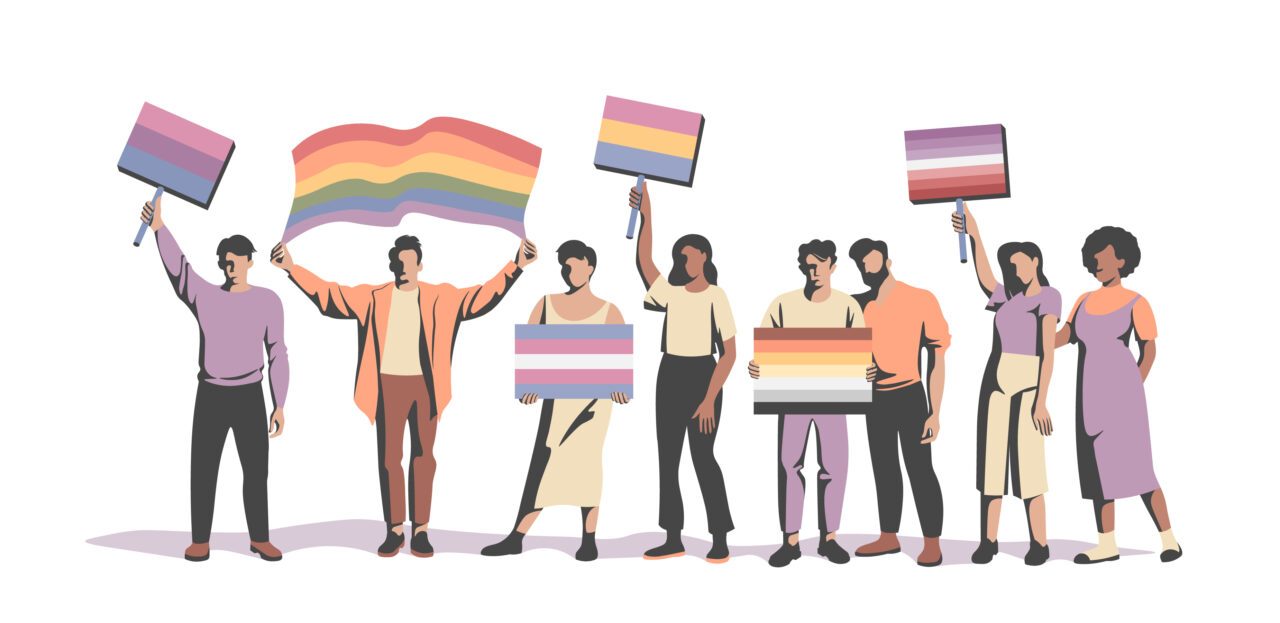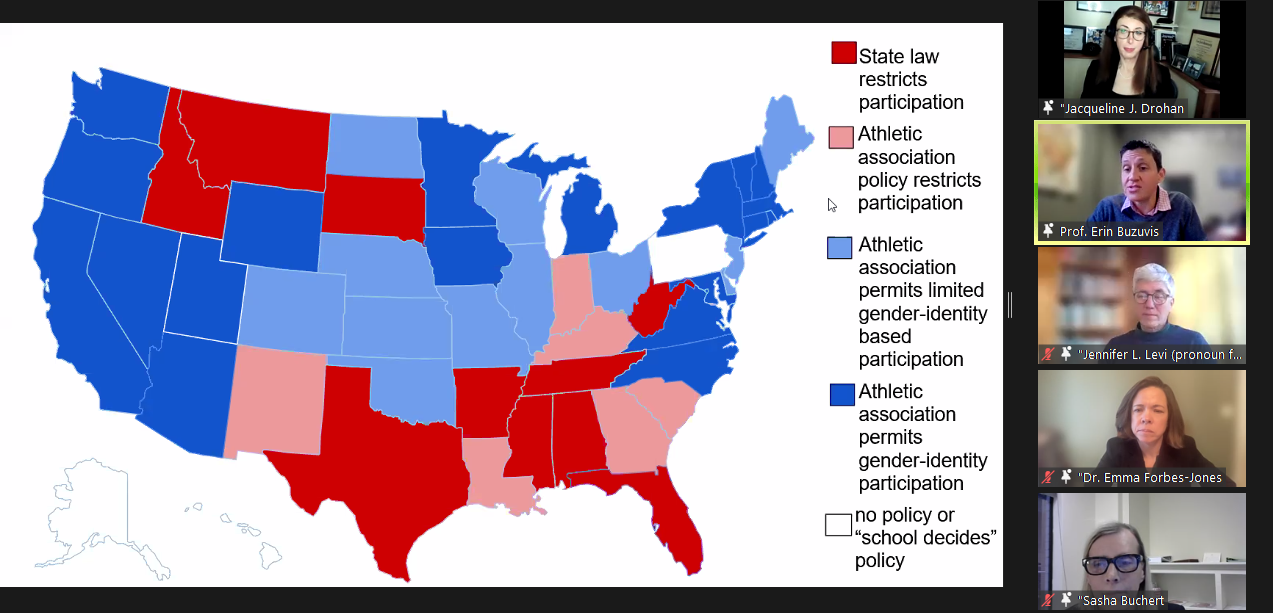The Gender Recognition Act: Progress for Transgender and Nonbinary New Yorkers
10.5.2021
Come December 2021, those seeking to legally change their name and gender designation will no longer be subject to an antiquated requirement that has left many individuals reluctant to come forward for fear of inviting public ridicule, scorn and even physical violence.
The Gender Recognition Act (GRA), sponsored by Senator Brad Hoylman and Assemblymember Danny O’Donnell, amends the New York State Civil Rights Law, Public Health Law and Vehicle & Traffic Law to streamline the process for New Yorkers to obtain name change orders and to allow transgender and nonbinary New Yorkers to change the sex designation on their identifying documents, including adding a new sex designation “X” for nonbinary individuals.
Name Changes for Transgender New Yorkers
Under existing New York law, individuals can change their name by filing a name change petition.[1] Once the court approves the name change, an order is issued, authorizing the petitioner to assume their “new” name. The name change papers (including the order and the petition) are entered with the county clerk’s office and are thereafter available to the public.[2]
In most cases, the court also requires applicants to publish a notice of the name change in a newspaper in the county where they reside. This notice includes the person’s “new” name, address, date of birth, place of birth, and current legal name.[3] For transgender individuals, this legal name is oftentimes a “dead name” – a name given to the person at birth that is not consistent with their gender identity.
There are a host of issues created by requiring transgender individuals to publish notice of their name changes, including, most obviously, that publication would “out” that person as transgender to the rest of the world. Given the prevalence of violence and hate crimes targeted at transgender individuals, “outing” someone as transgender can not only be embarrassing but could also expose the individual to the risk of violence. Moreover, since the documents are made available to the public, it creates a permanent public record of the individual’s transgender status.
The current law provides only one exception to this publication requirement in that the court may waive publication if the court finds that it would jeopardize the applicant’s personal safety. If the court makes this finding, it can also order that the record of the proceeding be sealed – meaning, it would not be accessible to the public.[4]
While many trial courts have recognized the dangers of requiring transgender individuals to publish notice of their name changes and have waived the publication requirement,[5] this determination is discretionary, left to the opinion of each individual trial judge. It is certainly conceivable that a judge (especially one who is not familiar with or is hostile to transgender issues) may decline to exercise his or her discretion to allow the applicant to avoid “outing” themselves through publication.
The GRA addresses this issue by removing the publication requirement altogether, meaning that it is no longer required that applicants publish notice of their name changes.[6] With the removal of this publication requirement, transgender individuals are no longer required to broadcast their private, personal decision to legally change their name to match their gender identity.
The GRA also expands upon the current exemption to the public records requirement, providing that the records may be sealed if an open record would jeopardize the applicant’s personal safety, and specifies that the court must consider an applicant’s status as transgender and the risk of violence or discrimination against the applicant as a result of their transgender status. The GRA also provides that applicants shall not be required to demonstrate a specific instance or history of threats to their safety in order to seal the records.[7] This removes the possibility that an anti-LGBTQ judge may deny transgender applicants their right to privacy and confidentiality.
Sex Designation Changes
In addition to streamlining the name change process, the GRA also creates a brand new mechanism for legally changing an individual’s sex designation, allowing individuals to change their sex designation from “Male” to “Female” (or vice versa) to match their gender identity. The GRA also allows for a third sex designation, “X,” for nonbinary individuals.
Currently, if individuals wish to change the sex designation on their identifying documents (birth certificate, driver’s license, social security card, etc.), they are required to submit a certification from a physician that the individual is transgender and that they have received appropriate clinical treatment for gender transition.[8] Obviously this can be an arduous, embarrassing, time-consuming, and potentially expensive process. This can also be a significant barrier for those who have not sought or do not have access to gender-affirming medical care, including those without insurance. And, with the only choices being “Male” or “Female,” nonbinary individuals were left without an adequate option.
The GRA solved these issues by adding a new article (Article 6-A) to the Civil Rights Law, authorizing applicants to file a petition to change their sex designation.[9] Now, the applicants must simply submit an affidavit attesting to their gender identity or their reason for seeking the change, and the court shall issue an order permitting the individual to change their sex designation on their identifying document(s). The GRA specifically provides that applicants shall not be required to provide any medical evidence to support their application, relieving individuals from the burden on obtaining medical documentation in order to update their records. A petition to change sex designation may be made simultaneously with a name change petition or on its own, and the record of such proceeding is automatically sealed.
Importantly, for any documents issued within New York State (i.e., a New York birth certificate or driver’s license), a court order is not required to change an individual’s sex designation. In fact, the GRA specifically amended the Public Health Law and Vehicle & Traffic Law to provide that applicants may update their sex designation (including selecting “X”) simply by making the request to the Department of Health[10] or Department of Motor Vehicles,[11] without needing to provide any type of supporting evidence.[12]
New York is now the 21st state to create “X” gender marker designations for its residents.[13]
Conclusion
As was set forth in the Governor’s Approval Memorandum for the bill, “[t]he GRA removes longstanding barriers to equality under the law and ensures expanded protections for transgender and nonbinary New Yorkers. . . . It also ensures that New Yorkers will be able to have their gender identity on official documents and provides protections to reduce discrimination against nonbinary and transgender New Yorkers by permitting name change and sex designation changes to be sealed more easily.”
Teri Wilhelm, transgender rights advocate and Chair of TGNCNBI Policy Committee for Equality New York, calls the GRA “important progress for gender expansive New Yorkers”:
Relieved of the requirement to publish one’s dead name, birthdate and address in local papers – with the obvious connotation that one has transitioned their gender – preserves dignity and abates the public harm so often sanctioned under the ruse of legal process. This huge, multi-organization effort to preserve our safety, will, at long last, allow for personal attestation to one’s gender without certification from scarcely available and expensive medical support, and use the gender marker “X” on all identity documentation inclusive of housing, utilities, education and health matters. The Gender Recognition Act is a wildly progressive effort for New York and a lifeline to those who so desperately deserve affirmation.
The Gender Recognition Act was signed into law during Pride Month, on June 24, 2021. The law becomes effective December 21, 2021.
Joseph R. Williams, an attorney with the Albany law firm Copps DiPaola Silverman, practices primarily in adoption, assisted reproduction and surrogacy law, as well as representing adults and minors in name change proceedings and assisting them with updating their gender designations on identifying documents. He is also the cofounder and director of surrogate services for the New York Surrogacy Center, a surrogacy matching program.
Click here to find out more about NYSBA’s LGBTQ Law Section.
[1] N.Y. Civil Rights Law § 60 (CVR). If the applicant is a minor, the petition may be filed by the applicant’s parent or legal guardian. Id.
[2] CVR § 63.
[3] Id.
[4] CVR § 64-a.
[5] See e.g., In re E.P.L., 26 Misc.3d 336, 339 (Sup. Ct., Westchester Co. 2009); In re J.A.L., 53 Misc.3d 1220(A) (Sup. Ct., Suffolk Co. 2016).
[6] CVR § 63. Notably, this applies to all name change proceedings (minor or infant), regardless of whether the applicant is transgender.
[7] CVR § 64-a.
[8] In March 2020, the Bureau of Vital Statics changed its internal policy to no longer require physician’s certifications to amend birth certificates; however, this was only a policy change (not legislative), and other entities (including the Department of Motor Vehicles) did not adopt such a policy.
[9] CVR § 67.
[10] PHL §§ 4138(1)(f).
[11] VTL §§ 490(2), 502(1).
[12] See VTL §§ 490(2), 502(1); PHL § 4138(1)(f).
[13] Bohm, A., New York Will Offer X Gender Markers on IDs, New York Civil Liberties Union (July 8, 2021).






